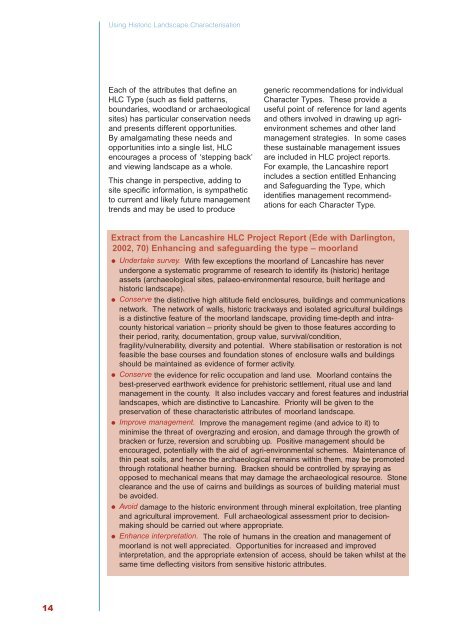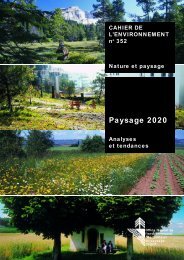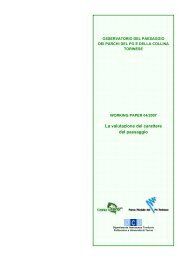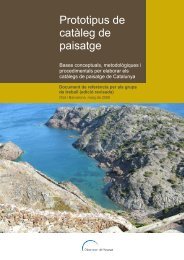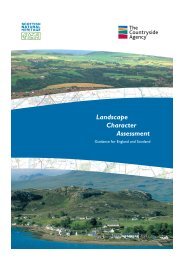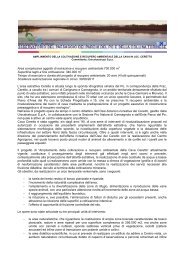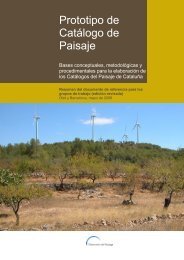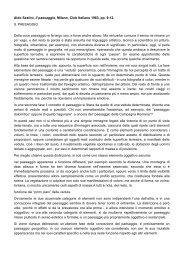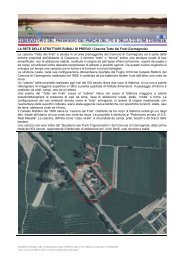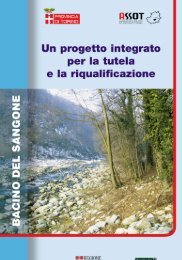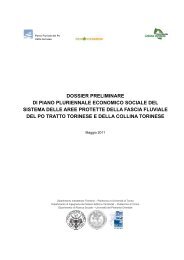Using Historic Landscape Characterisation
Using Historic Landscape Characterisation
Using Historic Landscape Characterisation
You also want an ePaper? Increase the reach of your titles
YUMPU automatically turns print PDFs into web optimized ePapers that Google loves.
<strong>Using</strong> <strong>Historic</strong> <strong>Landscape</strong> <strong>Characterisation</strong><br />
Each of the attributes that define an<br />
HLC Type (such as field patterns,<br />
boundaries, woodland or archaeological<br />
sites) has particular conservation needs<br />
and presents different opportunities.<br />
By amalgamating these needs and<br />
opportunities into a single list, HLC<br />
encourages a process of ‘stepping back’<br />
and viewing landscape as a whole.<br />
This change in perspective, adding to<br />
site specific information, is sympathetic<br />
to current and likely future management<br />
trends and may be used to produce<br />
generic recommendations for individual<br />
Character Types. These provide a<br />
useful point of reference for land agents<br />
and others involved in drawing up agrienvironment<br />
schemes and other land<br />
management strategies. In some cases<br />
these sustainable management issues<br />
are included in HLC project reports.<br />
For example, the Lancashire report<br />
includes a section entitled Enhancing<br />
and Safeguarding the Type, which<br />
identifies management recommendations<br />
for each Character Type.<br />
Extract from the Lancashire HLC Project Report (Ede with Darlington,<br />
2002, 70) Enhancing and safeguarding the type – moorland<br />
Undertake survey. With few exceptions the moorland of Lancashire has never<br />
undergone a systematic programme of research to identify its (historic) heritage<br />
assets (archaeological sites, palaeo-environmental resource, built heritage and<br />
historic landscape).<br />
Conserve the distinctive high altitude field enclosures, buildings and communications<br />
network. The network of walls, historic trackways and isolated agricultural buildings<br />
is a distinctive feature of the moorland landscape, providing time-depth and intracounty<br />
historical variation – priority should be given to those features according to<br />
their period, rarity, documentation, group value, survival/condition,<br />
fragility/vulnerability, diversity and potential. Where stabilisation or restoration is not<br />
feasible the base courses and foundation stones of enclosure walls and buildings<br />
should be maintained as evidence of former activity.<br />
Conserve the evidence for relic occupation and land use. Moorland contains the<br />
best-preserved earthwork evidence for prehistoric settlement, ritual use and land<br />
management in the county. It also includes vaccary and forest features and industrial<br />
landscapes, which are distinctive to Lancashire. Priority will be given to the<br />
preservation of these characteristic attributes of moorland landscape.<br />
Improve management. Improve the management regime (and advice to it) to<br />
minimise the threat of overgrazing and erosion, and damage through the growth of<br />
bracken or furze, reversion and scrubbing up. Positive management should be<br />
encouraged, potentially with the aid of agri-environmental schemes. Maintenance of<br />
thin peat soils, and hence the archaeological remains within them, may be promoted<br />
through rotational heather burning. Bracken should be controlled by spraying as<br />
opposed to mechanical means that may damage the archaeological resource. Stone<br />
clearance and the use of cairns and buildings as sources of building material must<br />
be avoided.<br />
Avoid damage to the historic environment through mineral exploitation, tree planting<br />
and agricultural improvement. Full archaeological assessment prior to decisionmaking<br />
should be carried out where appropriate.<br />
Enhance interpretation. The role of humans in the creation and management of<br />
moorland is not well appreciated. Opportunities for increased and improved<br />
interpretation, and the appropriate extension of access, should be taken whilst at the<br />
same time deflecting visitors from sensitive historic attributes.<br />
14


